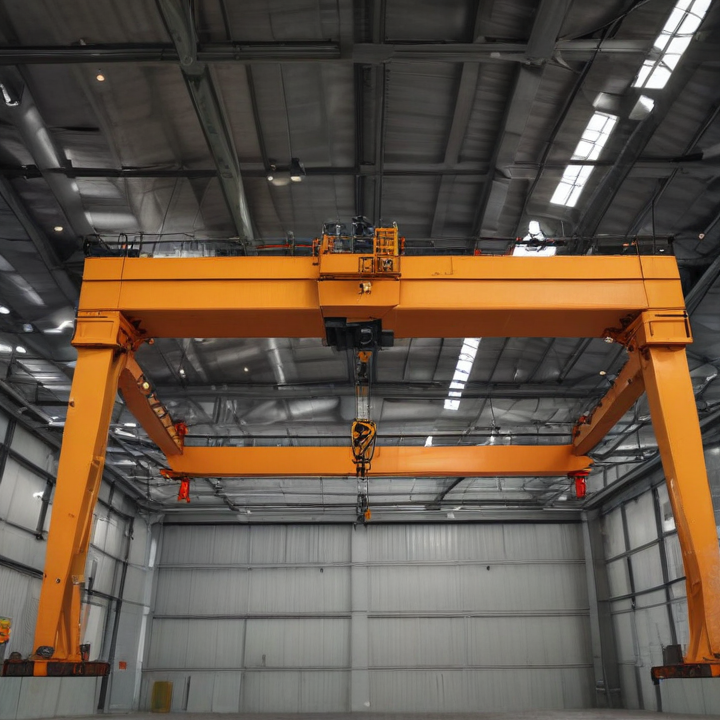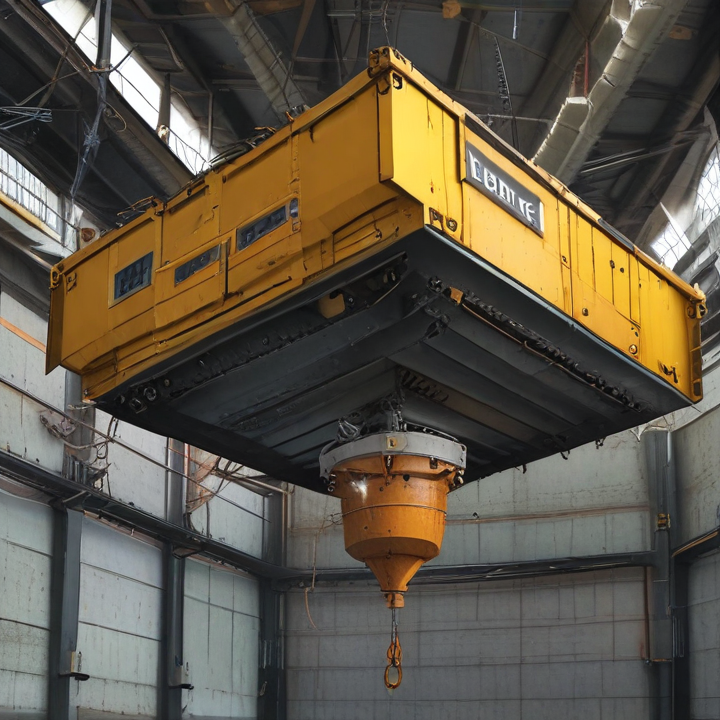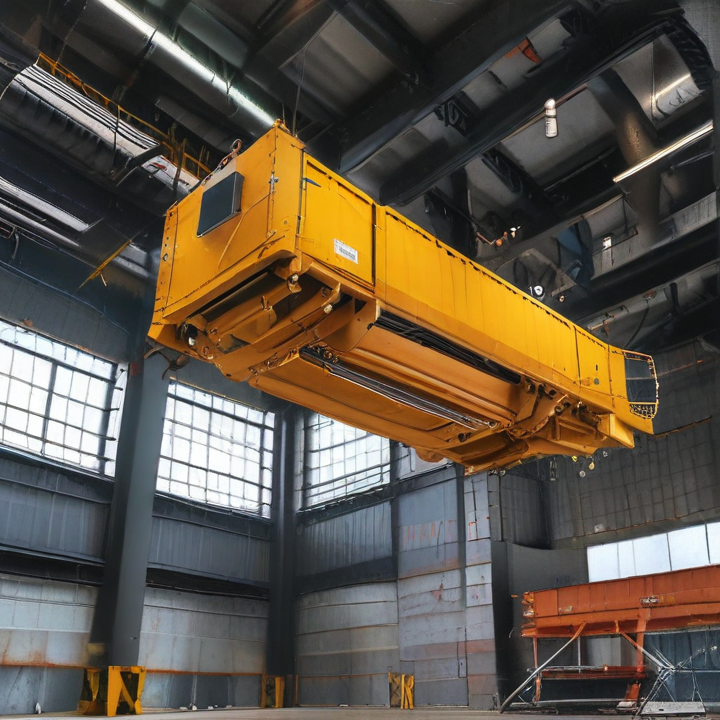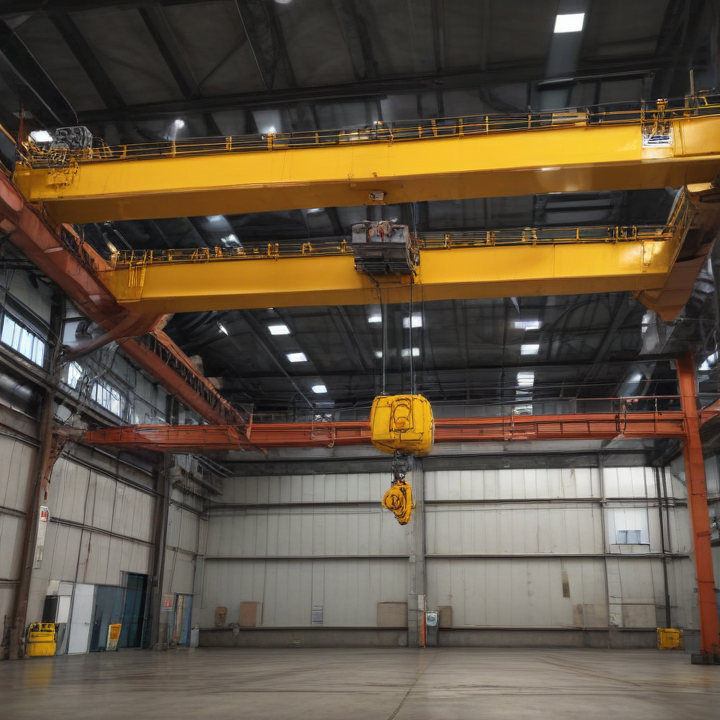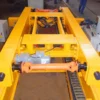explosion proof overhead crane Safety Certifications
Explosion-proof overhead cranes are essential in environments prone to flammable gases, vapors, or dust, such as chemical plants, grain mills, or oil refineries. Ensuring they meet stringent safety certifications is crucial to prevent catastrophic events.
1. ATEX Certification (EU): The ATEX Directive 2014/34/EU regulates equipment and protective systems for use in potentially explosive atmospheres. To achieve ATEX certification, the entire crane system, including electrical components, must undergo rigorous testing to demonstrate it won’t ignite explosive atmospheres.
2. IECEx Certification (Global): The International Electrotechnical Commission’s System for Certification to Standards Relating to Equipment for Use in Explosive Atmospheres (IECEx) provides a global framework verifying compliance with international standards. It ensures that equipment adheres to IEC standards, which is critical for multinational operations.
3. Class/Division Certification (North America): In North America, explosion-proof cranes must conform to classifications from the National Electrical Code (NEC), particularly Class I Division 1 or 2, or Class II Division 1 or 2, which describe environments with explosive gases or dust. Class I covers gases and vapors, while Class II pertains to dust. Additionally, Canadian standards (CSA) often align closely with NEC requirements.
4. Ex d Certification: This certification pertains to enclosures that can withstand an internal explosion of specified gases and prevent the transmission of the explosion to the external atmosphere. It’s often part of the broader ATEX or IECEx certifications but may be referenced independently.
5. Local Certifications and Approvals: Different countries may have specific certifications or statutory requirements that must be met. These certifications ensure that the equipment is safe for use within that particular jurisdiction’s regulatory framework.
To sum up, explosion-proof overhead cranes should have ATEX, IECEx, and relevant Class/Division certifications, supplemented by local regulatory approvals to ensure comprehensive safety compliance across various operational environments.
List Reference Technical Parameters of “explosion proof overhead crane”
Explosion-proof overhead cranes are specialized lifting devices designed for hazardous environments where flammable gases, vapors, or combustible dusts are present. Below are the reference technical parameters typically associated with these cranes:
1. Explosion Protection Rating: Certified as per ATEX (Atmosphères Explosibles) or IECEx standards. Common classifications include Zone 1 and Zone 2 for gases, and Zone 21 and Zone 22 for dusts.
2. Load Capacity: Ranges from 1 ton to 100 tons or more, depending on the application and design.
3. Span Length: Typically varies from 5 meters to 40 meters, custom-designed based on the facility.
4. Lifting Height: Normally between 5 meters to 30 meters, adjustable as per specific requirements.
5. Crane Speed:
– Hoisting Speed: 0.5 to 10 meters per minute.
– Trolley Traveling Speed: 2 to 20 meters per minute.
– Crane Traveling Speed: 3 to 30 meters per minute.
6. Motor Specifications:
– Type: Explosion-proof motors compliant with Ex d (flameproof) and Ex e (increased safety) methods.
– Power: Varies depending on load and speed requirements.
7. Control System:
– Type: Options include pendant control, wireless remote control, and cab control.
– Safety Features: Include emergency stop, overload protection, and anti-collision systems.
8. Electrical Components: All wiring, switches, and lighting fixtures are explosion-proof and typically enclosed in flameproof housings.
9. Material and Construction: Robust construction using high-strength steel, with surface treatments such as epoxy coatings to resist corrosion, especially in chemical atmospheres.
10. Temperature Range: Designed to operate efficiently in ambient temperatures from -20°C to +40°C or as specified.
11. Duty Classification: According to FEM, ISO, or CMAA standards, commonly ranging from light-duty (A1, M1) to heavy-duty (A8, M8).
12. Operational Environment: Suitable for petrochemical plants, refineries, wastewater treatment facilities, and other hazardous locations.
These parameters ensure that the explosion-proof overhead crane operates safely and efficiently in hazardous environments, minimizing the risk of explosions and ensuring personnel safety.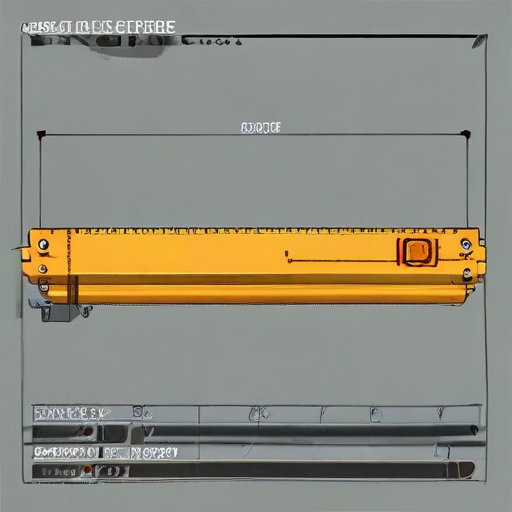
List Product features of “explosion proof overhead crane”
An explosion-proof overhead crane is a specialized crane designed to operate safely in hazardous environments where there is a potential for explosions due to the presence of flammable gases, vapors, or dust. Here are some key features of explosion-proof overhead cranes:
1. Explosion-Proof Components: All electrical and mechanical components, such as motors, switches, and controls, are designed to be explosion-proof, adhering to specific safety certifications such as ATEX or NEC.
2. Non-Sparking Materials: Construction materials are selected to minimize the risk of sparks, which includes the use of non-sparking metals such as bronze or aluminum for certain parts.
3. Controlled Ventilation: These cranes often feature systems that offer proper ventilation to avoid the accumulation of hazardous gases or dust, thus maintaining a safer operational environment.
4. Temperature Control: To prevent overheating, which can lead to ignition, the design includes temperature control systems for critical components.
5. Sealed Enclosures: Electrical enclosures are tightly sealed to prevent ingress of hazardous substances, ensuring internal components remain isolated from external contaminants.
6. Intrinsic Safety Circuits: The electrical circuits are designed for intrinsic safety, limiting electrical energy to a level that’s too low to ignite hazardous atmospheres.
7. Enhanced Durability: Built to withstand harsh conditions, these cranes utilize robust materials and feature corrosion-resistant coatings to maintain integrity in challenging environments.
8. Precision Control Systems: Advanced control systems provide precise operation, reducing the risk of accidental movements that could trigger explosions.
9. Regular Compliance and Inspection: These cranes typically come with stringent compliance requirements and periodic inspections to ensure ongoing operational safety, in align with international safety standards.
10. Customizable Design: They can be customized to fit specific industrial requirements, including the type of hazardous environment they will operate in.
The blend of these features ensures that explosion-proof overhead cranes can perform safely and efficiently in environments where standard cranes would pose a significant risk.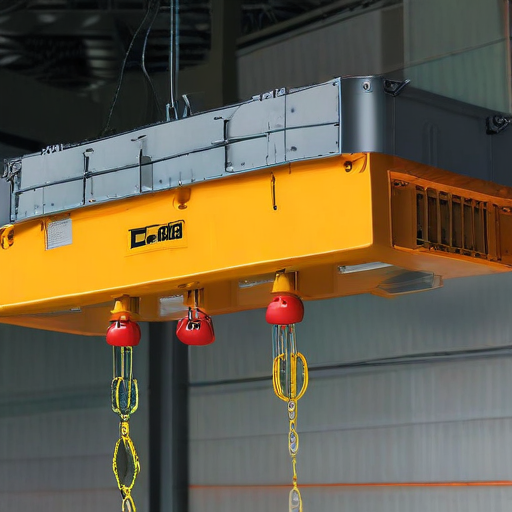
List Various Types of “explosion proof overhead crane”
Explosion-proof overhead cranes are specialized lifting devices designed to operate safely in hazardous environments where there is a risk of explosion due to the presence of flammable gases, vapors, or dust. These cranes are built with materials and components that minimize the risk of sparks or heat generation. Here are various types of explosion-proof overhead cranes:
1. Single Girder Explosion-Proof Overhead Crane: Features one main beam and is suitable for lighter loads. It’s usually used in applications where space is limited.
2. Double Girder Explosion-Proof Overhead Crane: Comprises two main beams and is designed for heavier and larger loads. It provides better stability and higher lifting capacities.
3. Explosion-Proof Electric Hoist Overhead Crane: Combines an explosion-proof hoist with either single or double girder cranes for environments requiring safe lifting operations.
4. Top Running Explosion-Proof Overhead Crane: The crane runs on top of parallel runways, offering maximum space below the crane and is ideal for heavy-duty operations.
5. Under Running (Underslung) Explosion-Proof Overhead Crane: Runs on the bottom flange of the runway beams, typically used for lighter loads and lower headroom conditions.
6. Explosion-Proof Gantry Crane: While not technically an overhead crane, gantry cranes can also be fitted with explosion-proof features. They are useful for outdoor applications or where a permanent structure is not possible.
7. Bridge Explosion-Proof Overhead Crane: Characterized by the bridge-like structure that spans over the working area. It can be single or double girder depending on the application requirements.
8. Jib Explosion-Proof Overhead Crane: A type of crane with a horizontal arm (jib) that works in a limited radius. This type integrates explosion-proof technology for smaller, localized tasks.
Selecting the right type of explosion-proof overhead crane depends on factors like load capacity, operational environment, and specific industry requirements.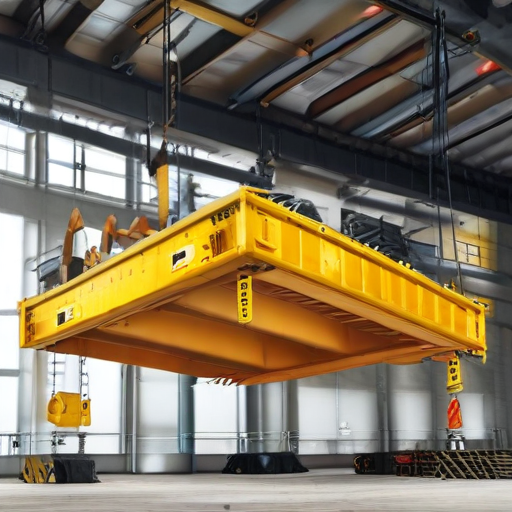
List Application of “explosion proof overhead crane”
Explosion-proof overhead cranes are engineered to operate in environments where there is a risk of explosion due to the presence of flammable gases, vapors, dust, or fibers. Here are some key applications:
1. Chemical and Petrochemical Plants: Used to handle raw materials, equipment, and finished products, ensuring safe operation in environments with flammable chemicals.
2. Oil and Gas Industries: Employed on drilling rigs and in refineries for lifting heavy components and equipment in explosive atmospheres.
3. Mining Operations: Essential for material handling in mines where combustible dusts are present, helping to minimize the risk of igniting explosive mixtures.
4. Pharmaceutical Manufacturing: Utilized in the production and handling of sensitive chemical compounds to prevent ignition in sterile and controlled environments.
5. Food Processing Plants: Installed in facilities where grain dust or other flammable substances pose explosion risks, such as in grain elevators and flour mills.
6. Paint and Coating Factories: Used in environments with volatile organic compounds (VOCs) to ensure safe handling of materials and machinery.
7. Ammunition and Explosives Manufacturing: Critical for the safe handling of explosive materials and components during manufacturing and assembly.
8. Waste Treatment Facilities: Used in operations that handle hazardous waste materials, providing a safe method to move and process potentially explosive substances.
9. Textile Mills: Applied in environments with explosive textile fibers, aiding in safe material handling and machinery positioning.
10. Agricultural Facilities: Deployed in processing plants and storage facilities handling flammable agricultural products like grains and fertilizers.
These cranes are built to comply with strict safety standards and certifications, incorporating features such as spark-resistant materials, explosion-proof electrical components, and robust construction designed to withstand harsh and hazardous conditions. They are vital investments for any industry needing to protect its workforce, property, and production integrity from potential explosive hazards.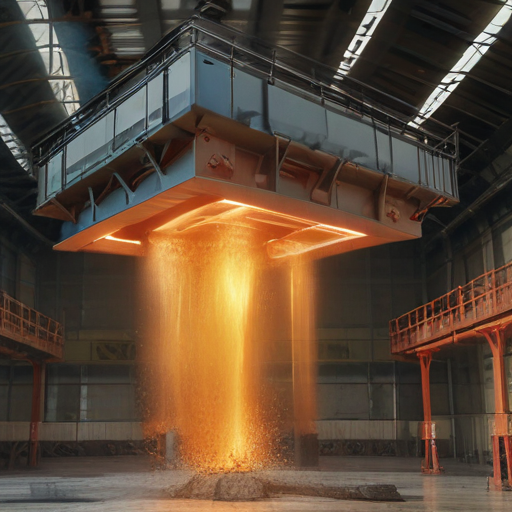
List Buyer Types of “explosion proof overhead crane”
The buyer types for explosion-proof overhead cranes are diverse and vary depending on their specific needs and industrial contexts. Below are some of the main buyer types:
1. Oil and Gas Industry:
– Offshore Oil Rigs: Require explosion-proof cranes to handle materials safely due to the high risk of explosive gases.
– Refineries: Use these cranes in zones with volatile environments to move heavy equipment and materials.
2. Chemical and Petrochemical Plants:
– Facilities dealing with hazardous chemicals necessitate explosion-proof cranes for safe handling and transportation of raw materials and products.
3. Pharmaceutical Manufacturing:
– Certain phases in pharmaceutical production involve volatile substances; explosion-proof cranes ensure safety while moving equipment and materials.
4. Mining and Mineral Processing:
– Operations in underground mines and processing plants often encounter explosive gases and dust, requiring explosion-proof lifting solutions.
5. Paint and Coating Manufacturing:
– The use of flammable solvents makes explosion-proof cranes crucial for material handling within manufacturing plants.
6. Food and Beverage Industry:
– Facilities involved in handling combustible dust, such as grain and sugar processing plants, use explosion-proof cranes to ensure safety and compliance with strict regulations.
7. Power Generation:
– Power plants, especially those using coal or gas, need explosion-proof cranes for maintenance and handling of potentially explosive substances.
8. Warehousing and Logistics:
– Warehouses storing flammable goods may require explosion-proof overhead cranes for efficient and safe material handling.
9. Automotive:
– Manufacturing plants in the automotive sector using volatile chemicals and materials in certain processes may employ explosion-proof cranes to enhance safety.
10. Military and Aerospace:
– Storage and handling facilities for munitions and rocket fuel depend on explosion-proof cranes for safe operations in hazardous environments.
Each of these sectors places a high priority on safety, regulatory compliance, and efficiency, making explosion-proof overhead cranes a vital equipment choice for their operations.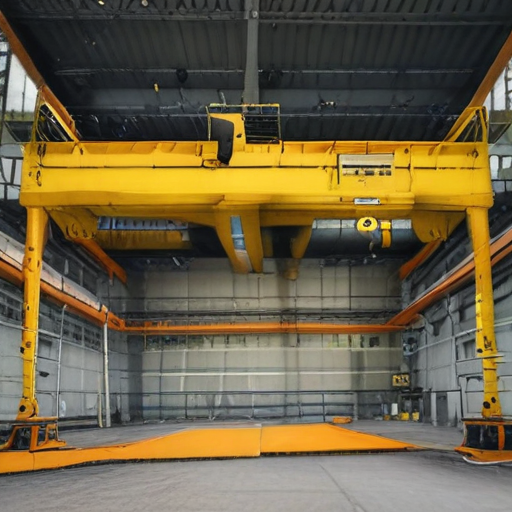
List “explosion proof overhead crane” Project Types for Different Industries
Explosion-proof overhead cranes are specialized lifting equipment designed to operate safely in environments with flammable gases, vapors, dust, or fibers. These cranes are essential in various industries to mitigate the risk of explosions. Here are some key project types for different industries:
1. Chemical Industry:
– Chemical Manufacturing Plants: Handling chemicals, catalysts, and solvents.
– Pharmaceutical Production Facilities: Lifting materials in environments with volatile organic compounds.
2. Oil and Gas Industry:
– Refineries: Maintenance and material handling near flammable gases and liquids.
– Offshore Platforms: Transporting equipment in zones with potential gas leaks.
3. Mining and Mineral Processing:
– Coal Mines: Moving equipment in dust-laden atmospheres.
– Ore Processing Plants: Handling materials in areas with dust and flammable chemical presence.
4. Food and Beverage Industry:
– Flour Mills: Managing heavy machinery and materials where flour dust is present.
– Distilleries and Breweries: Handling barrels and equipment in environments with alcohol vapors.
5. Pharmaceutical Industry:
– Drug Manufacturing Facilities: Transporting sensitive equipment and materials in volatile environments.
6. Paint and Coating Industry:
– Manufacturing Plants: Lifting large quantities of flammable paint and solvents.
– Storage Warehouses: Handling drums and containers in potentially ignitable atmospheres.
7. Automotive Industry:
– Paint Shops: Managing body parts and assemblies where flammable paint vapors are present.
8. Heavy Machinery Manufacturing:
– Factories: Equipment and part handling in zones with potentially explosive dust.
9. Environment and Waste Management:
– Waste Treatment Plants: Moving hazardous waste in explosive-prone areas.
– Recycling Facilities: Handling materials that may generate flammable dust or gases.
10. Textile Industry:
– Fabric Mills: Operating in environments with combustible fibers and dust.
In each of these industries, explosion-proof overhead cranes ensure safe operations by adhering to stringent safety standards and utilizing materials and designs that prevent sparks or heat generation.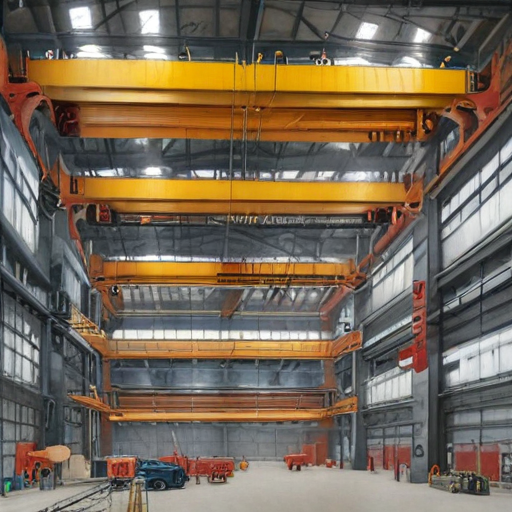
explosion proof overhead crane Accessories Upgrades and Custom Manufacturing Options
An explosion-proof overhead crane is vital for operations in hazardous environments, such as chemical plants, oil refineries, and mining sites. To ensure optimal performance and safety, various accessories, upgrades, and custom manufacturing options are available.
Accessories:
1. Load Indicators: Provide real-time weight measurements to prevent overloading.
2. Anti-Collision Systems: Utilize sensors to avoid crane collisions within the workspace.
3. Wireless Remote Controls: Enable safe, precise operation from a distance.
4. Explosion-Proof Lighting: Enhances visibility in dark or dim operational areas.
5. Spark-Resistant Components: Includes bronze hooks and aluminum wheels to minimize ignition risks.
Upgrades:
1. Enhanced Motor Protection: Incorporates flameproof or intrinsic safety-rated motors to withstand explosive atmospheres.
2. Advanced Control Systems: Features variable frequency drives (VFDs) for smoother, adjustable speed control.
3. Improved Braking Systems: High-performance brakes with redundant safety features to ensure load security.
4. Corrosion-Resistant Coatings: Protects crane components from harsh chemicals and moisture.
5. Load Management Software: Integrates with existing systems for better load tracking and documentation.
Custom Manufacturing Options:
1. Tailored Design: Cranes engineered to specific dimensions and lifting capacities.
2. Material Choice: Selection of materials like stainless steel or galvanized steel for enhanced durability.
3. Specialized Hooks and Attachments: Custom lifting attachments tailored to unique load requirements.
4. Environmental Adaptations: Designs suitable for extreme temperatures or specific environmental conditions.
5. Sealing and Encapsulation: Use of seals and encapsulated electronics to protect against dust and moisture ingress.
These customizable options ensure that each explosion-proof overhead crane is optimally equipped for the unique challenges of its intended environment, maximizing operational safety and efficiency.
List Quality Control and The Manufacturing Process of “explosion proof overhead crane”
Quality Control and Manufacturing Process of Explosion Proof Overhead Crane
Manufacturing Process:
1. Design and Engineering:
– Begin with a thorough assessment of specifications based on the operational environment.
– Use CAD software to design the crane, ensuring compliance with international explosion-proof standards (e.g., ATEX, IECEx).
2. Material Selection:
– Select materials resistant to sparks and with high durability.
– Common choices include non-sparking, corrosion-resistant metals and anti-static polymers.
3. Component Fabrication:
– Manufacture key components such as the bridge, trolley, hoist, and electrical components.
– Apply specific treatments like anti-corrosion coatings and thermally protective barriers.
4. Assembly:
– Assemble all parts in a controlled environment to maintain quality and safety.
– Use torque control assembly tools to ensure precise fastening.
5. Electrical Integration:
– Install specially designed explosion-proof electrical fittings and wiring.
– Segregate and securely mount electrical components to prevent electrical hazards.
6. Testing and Calibration:
– Perform rigorous testing, including load tests and functional checks.
– Calibrate safety mechanisms, such as limit switches and emergency brakes.
Quality Control:
1. Raw Material Inspection:
– Inspect all incoming materials for compliance with required specifications.
– Conduct non-destructive testing (NDT) to check for internal flaws.
2. In-Process Inspections:
– Monitor each manufacturing stage for adherence to design and safety standards.
– Utilize real-time quality metrics and statistical process control (SPC).
3. Assembly Verification:
– Conduct detailed inspections at key assembly stages.
– Verify torque settings, alignment, and assembly tolerances.
4. Functional Testing:
– Execute full operational testing under simulated working conditions.
– Validate explosion-proof capabilities through rigorous environmental testing.
5. Final Quality Audits:
– Perform a comprehensive quality audit before dispatch.
– Review all documentation, testing records, and compliance certificates.
6. Packaging and Delivery:
– Use specialized packaging to protect the crane from damage during transit.
– Ensure that all safety and operational manuals are included.
By meticulously following these processes, explosion-proof overhead cranes achieve the high reliability and safety required for hazardous environments.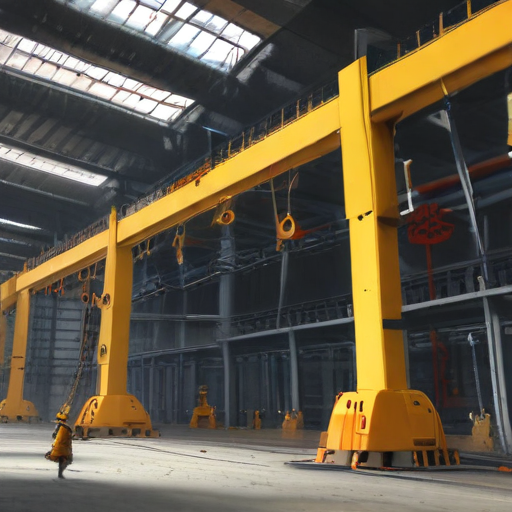
How to use “explosion proof overhead crane”
An explosion-proof overhead crane is designed to operate safely in hazardous environments where there’s a risk of explosions due to the presence of flammable gases, vapors, or dust. Here’s how to use it effectively:
1. Safety Checks:
– Inspect the crane for any visible damage or wear.
– Ensure that all electrical components are explosion-proof and properly sealed.
– Check all safety devices (emergency stops, limit switches) for functionality.
2. Control Station:
– Use the explosion-proof control station to operate the crane.
– Familiarize yourself with the controls including hoisting, traversing, and trolley operations.
3. Load Handling:
– Assess the load to ensure it is within the crane’s weight capacity.
– Use approved, non-sparking tools to secure the load.
– Attach the load to the crane hook securely, using appropriate rigging equipment.
4. Operation:
– Start lifting slowly to ensure the load is balanced and stable.
– Avoid sudden movements; operate the crane smoothly to minimize the risk of sparking.
– Keep the load clear of obstacles and personnel.
5. Environment Monitoring:
– Continuously monitor the environment for hazardous conditions.
– Ensure good ventilation to disperse any accumulating fumes or dust.
– Maintain clear communication with all personnel in the vicinity.
6. Shut Down:
– Lower the load and disconnect it carefully.
– Park the crane in a designated safe location.
– Turn off the power and perform any required post-operation checks.
7. Maintenance:
– Regularly inspect and maintain the crane following the manufacturer’s guidelines.
– Ensure all repairs and maintenance are conducted by trained personnel using explosion-proof tools and components.
Always adhere to local safety regulations and standards such as those provided by OSHA or ATEX. Proper training is essential for operators to handle an explosion-proof overhead crane safely and efficiently.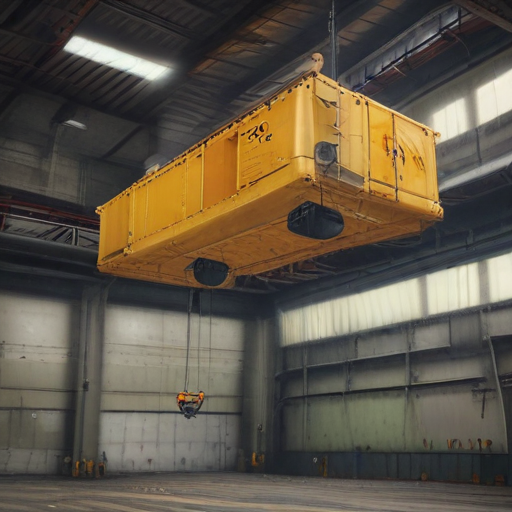
“explosion proof overhead crane” Comparative Analysis
Explosion-proof overhead cranes are specialized lifting systems designed for hazardous environments where flammable gases, dust, or vapors are present. They ensure safety by minimizing the risk of ignition during operation. Here’s a comparative analysis of explosion-proof overhead cranes:
Key Features:
1. Safety Ratings: These cranes often come with ATEX or IECEx certification, which indicates compliance with international safety standards for explosive atmospheres.
2. Material Construction: Constructed from non-sparking materials such as stainless steel and bronze to prevent ignition.
3. Electrical Components: Featuring intrinsically safe electrical systems to limit electrical sparks or overheating.
4. Sealing and Enclosures: Employing explosion-proof enclosures for motors and controls to prevent exposure to hazardous environments.
Typical Applications:
1. Oil and Gas: Used in refineries, petrochemical plants, and offshore drilling rigs.
2. Chemical Processing: Essential in chemical manufacturing plants dealing with reactive substances.
3. Mining: Crucial in coal mines where combustible dust is a constant hazard.
4. Pharmaceuticals: Important in pharmaceutical plants using volatile organic compounds.
Comparison with Standard Overhead Cranes:
1. Cost: Explosion-proof cranes are generally more expensive due to their specialized design and materials.
2. Weight Capacity: Both types can have similar weight capacities, but explosion-proof models may require additional structural elements, potentially reducing available capacity.
3. Maintenance: Regular checks and maintenance are crucial for both, but explosion-proof models often have stricter protocols due to their environment.
4. Installation: More rigorous planning and installation processes are needed for explosion-proof cranes to ensure compliance with safety regulations.
Manufacturers:
Leading manufacturers include Konecranes, Demag, and Street Crane, all of which offer explosion-proof models tailored to specific industry needs.
Conclusion:
Choosing an explosion-proof overhead crane hinges on the specific hazardous environment, required safety certifications, and compliance with local and international regulations. While more costly and demanding in terms of maintenance, their deployment is critical for operational safety in high-risk areas.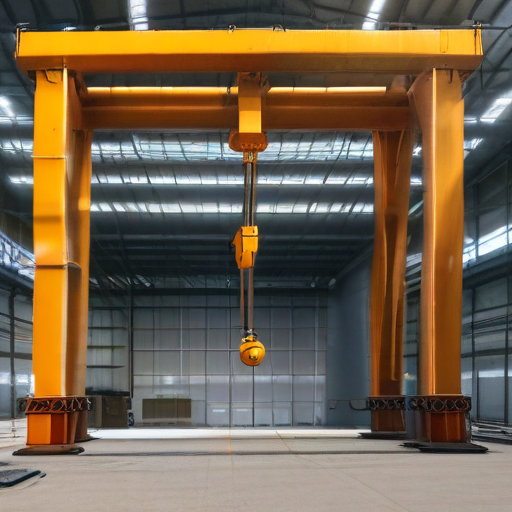
“explosion proof overhead crane” Warranty and Support
When selecting an explosion-proof overhead crane, warranty and after-sales support are critical considerations to ensure longevity, safety, and performance. Manufacturers typically offer a comprehensive warranty spanning between 12 to 24 months from the date of installation. This warranty generally covers defects in materials and workmanship, guaranteeing high-quality performance under specified operational conditions. It’s crucial to clarify whether the warranty includes both the crane and its explosion-proof components, as these are integral to ensuring safe operation in hazardous environments.
In terms of support, reputable manufacturers provide robust after-sales services. These usually encompass routine maintenance, prompt availability of spare parts, and emergency repair services. Remote diagnostics and technical support are often available to quickly address any operational issues, minimizing downtime.
Moreover, many suppliers offer optional extended warranty packages and planned maintenance programs that include periodic inspections and performance assessments of the crane and its critical components. These services ensure that the crane complies with safety standards and operational guidelines, reducing the likelihood of unexpected failures.
Customer support also frequently includes training programs for crane operators and maintenance personnel. This training focuses on safely handling the crane, recognizing early signs of wear or malfunction, and performing basic troubleshooting procedures.
To sum up, when investing in an explosion-proof overhead crane, a meticulous review of the warranty and support offerings is invaluable. This not only secures the financial investment but also enhances operational safety and efficiency, ensuring that the equipment performs reliably in hazardous environments. Always partner with manufacturers who have a proven track record in providing solid warranties and exceptional customer support.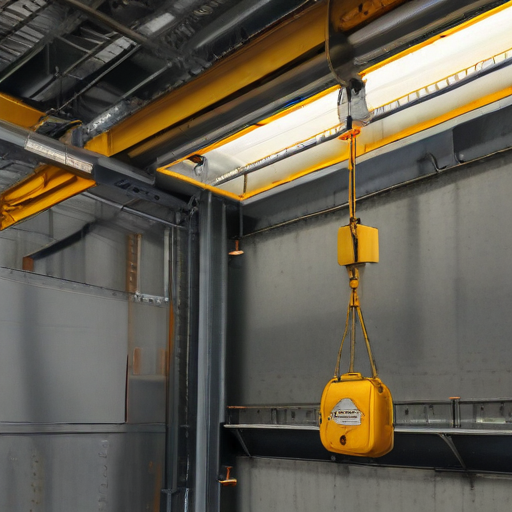
List “explosion proof overhead crane” FAQ
Explosion Proof Overhead Crane FAQ
1. What is an explosion proof overhead crane?
An explosion proof overhead crane is designed and manufactured to operate safely in hazardous environments where flammable gases, vapors, or dust may cause explosive atmospheres. These cranes comply with stringent safety regulations and standards to prevent ignition sources.
2. What industries use explosion proof overhead cranes?
They are commonly used in industries such as chemical processing, oil and gas, mining, pharmaceuticals, and food processing, where there is a risk of explosive atmospheres.
3. What safety standards govern explosion proof cranes?
Explosion proof cranes must meet various national and international safety standards, including ATEX (Europe), NEC/CEC (North America), and IECEx (international).
4. How is explosion protection achieved?
Explosion protection is accomplished through various design and construction techniques, such as using flameproof enclosures, intrinsically safe circuits, and components suitable for hazardous locations.
5. What are the key features of explosion proof overhead cranes?
Key features include robust and sealed electrical enclosures, corrosion-resistant materials, non-sparking components, and comprehensive control systems to limit energy release that could cause an explosion.
6. Can existing overhead cranes be modified to be explosion proof?
In some cases, existing cranes can be upgraded to explosion proof standards, but it often involves significant modifications and must meet regulatory compliance. It’s generally more efficient to purchase a crane specifically designed for explosion-proof applications.
7. What maintenance is required for an explosion proof crane?
Regular maintenance includes routine inspections, lubrication with approved materials, checking and replacing seals, and verifying the condition of electrical components. Maintenance must be performed by trained personnel familiar with explosion proof equipment.
8. How do you select the right explosion proof overhead crane?
Key considerations include understanding the specific hazardous environment (gas, dust, vapor), determining the area classification (Zone 1, Zone 2, Div 1, Div 2), evaluating load capacity requirements, and consulting with manufacturers or experts to ensure the crane meets all safety standards.
9. Are there specific operational guidelines for using explosion proof cranes?
Yes, operators must be trained on the special safety and operational procedures, emergency protocols, and regular inspection routines essential for safe crane operation in hazardous areas.
10. What documentation is provided with an explosion proof crane?
Comprehensive documentation typically includes certifications, operation manuals, maintenance guidelines, and conformity to safety standards and regulations.
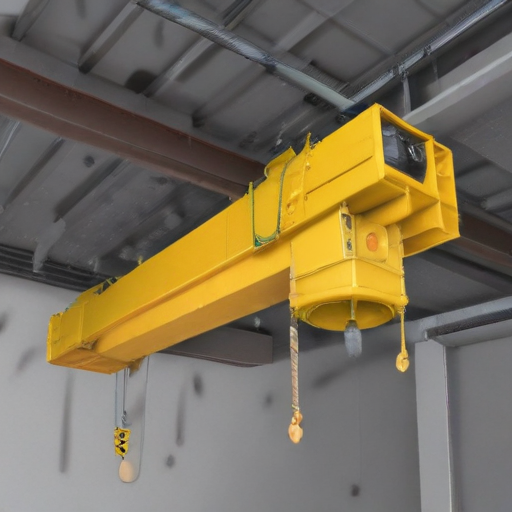
Top 10 FAQ with answer about explosion proof overhead crane for Buyer Sourcing from China
Sure, here are the top 10 frequently asked questions (FAQ) about sourcing explosion-proof overhead cranes from China, along with concise answers:
1. What is an explosion-proof overhead crane?
An explosion-proof overhead crane is a specialized lifting device designed to operate safely in hazardous environments with flammable gases, vapors, or dust. It incorporates materials and design elements that prevent sparks and high temperatures.
2. Why source explosion-proof overhead cranes from China?
China offers cost-effective manufacturing, a wide range of options, and compliance with international standards, making it a leading supplier in the global market for explosion-proof overhead cranes.
3. How do I ensure the quality of the crane?
Look for manufacturers with ISO 9001 certification, and request detailed information on compliance with international standards like ATEX or IECEx. Also, ask for customer references and past project details.
4. What certifications should the crane have?
An explosion-proof overhead crane should have ATEX, IECEx, or other relevant certifications confirming that it meets stringent safety standards for explosive atmospheres.
5. What factors should I consider when choosing a supplier in China?
Consider the supplier’s experience, certification, product range, customization capabilities, after-sales service, and customer reviews.
6. Can the crane be customized for specific needs?
Yes, many Chinese manufacturers offer customization options to tailor the crane’s capacity, span, lifting height, and explosion-proof features to fit specific operational requirements.
7. What is the typical lead time for delivery?
The lead time can vary based on customization and order size but generally ranges from 8 to 16 weeks. Confirm exact timelines with the supplier.
8. How is the crane shipped and installed?
Cranes are typically shipped in parts and require professional assembly and installation. Ensure the supplier provides detailed installation instructions or technician support.
9. What kind of after-sales support is available?
Leading suppliers offer warranties, spare parts, technical support, and sometimes on-site service. Verify the extent of after-sales support before finalizing the purchase.
10. Can I visit the manufacturing facility in China?
Reputable manufacturers often welcome factory visits. It’s an excellent opportunity to inspect production quality, meet the team, and discuss your project in detail.
These FAQs should help buyers make informed decisions when sourcing explosion-proof overhead cranes from China.

